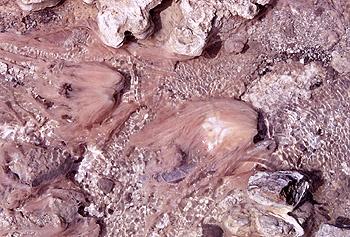Thermophiles are microorganisms with optimal growth temperatures between 60 and 108 degrees Celsius, isolated from a number of marine and terrestrial geothermally-heated habitats including shallow terrestrial hot springs, hydrothermal vent systems, sediment from volcanic islands, and deep sea hydrothermal vents.
Soon after their discovery, the heat-stable enzymes of thermophiles proved to be very important to the field of biotechnology. For example, two thermophilic species Thermus aquaticus and Thermococcus litoralis are used as sources of the enzyme DNA polymerase, for the polymerase chain reaction (PCR) in DNA fingerprinting. As thermophiles have become increasingly important in biotechnological research, the number of bioprospecting groups searching for useful organic compounds in nature have dramatically increased as well.
Scientists in the biotechnology field are among many groups of researchers taking an interest in thermophiles. Many scientists believe that life might have begun roughly 3 billion years ago in high temperature environments and that the first organisms might therefore have been thermophiles. Not only does this give insight into the origin of life on Earth, but opens up a new realm of possibilities for life elsewhere in the universe.
The first thermophi bacterium was isolated in 1966, from the boiling hot springs of Yellowstone National Park. Since this discovery, thermopiles have been discovered in geothermal features all over the world including areas in Iceland, Kamchatka, New Zealand, Italy, Mt. Lassen, and other locations. While boiling hot springs are far beyond the comfort zone of humans and other animals, life, especially prokaryotic life, is able to adapt to environments that would prove fatal to most other lifeforms.
Encyclopedia of Environmental Microbiology, 2002. vol.3.
http://serc.carleton.edu/microbelife/extreme/extremeheat/index.html
